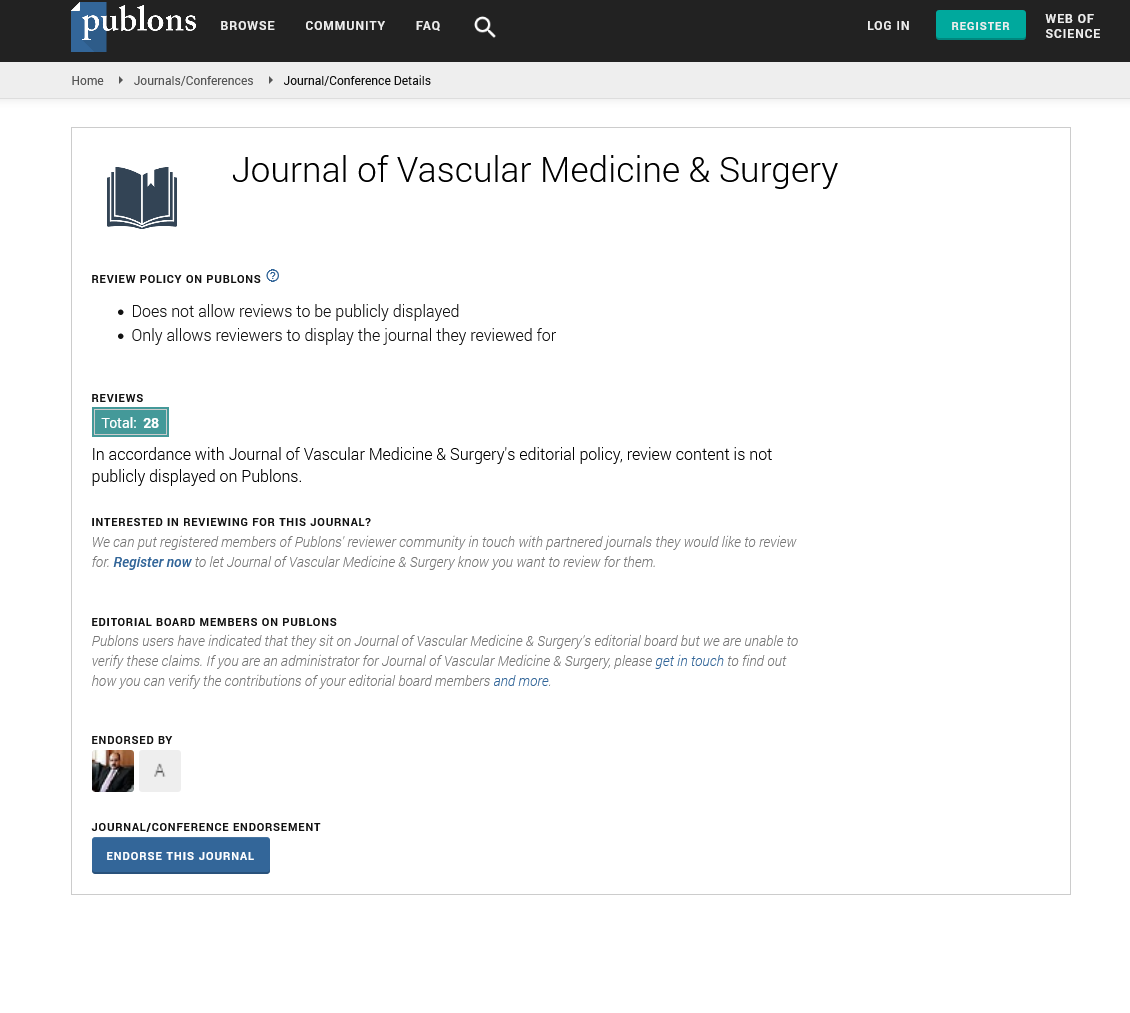Indexed In
- Open J Gate
- Academic Keys
- RefSeek
- Hamdard University
- EBSCO A-Z
- OCLC- WorldCat
- Publons
- Euro Pub
- Google Scholar
- SHERPA ROMEO
Useful Links
Share This Page
Journal Flyer

Open Access Journals
- Agri and Aquaculture
- Biochemistry
- Bioinformatics & Systems Biology
- Business & Management
- Chemistry
- Clinical Sciences
- Engineering
- Food & Nutrition
- General Science
- Genetics & Molecular Biology
- Immunology & Microbiology
- Medical Sciences
- Neuroscience & Psychology
- Nursing & Health Care
- Pharmaceutical Sciences
Opinion Article - (2025) Volume 13, Issue 5
Defining Cardiac Phases in Interoception Research: A Call for Consistency
Linde Wan*Received: 15-Apr-2025, Manuscript No. JVMS-25- 29208; Editor assigned: 17-Apr-2025, Pre QC No. JVMS-25- 29208 (PQ); Reviewed: 01-May-2025, QC No. JVMS-25- 29208; Revised: 08-May-2025, Manuscript No. JVMS-25- 29208 (R); Published: 15-May-2025, DOI: 10.35248/232 9-6925.25.13.567
Description
Study on interoception — how we perceive internal bodily states — has seen significant advances in recent years. Among the most compelling findings is the influence of the heart’s activity on how we process external sensory information. Studies have demonstrated that perception of pain, visual, tactile, and auditory stimuli can vary depending on whether these inputs occur during systole or diastole, the two main phases of the cardiac cycle. However, as interoception science grows more sophisticated, a critical challenge has come to light: inconsistent definitions of cardiac phases across studies. What one study group defines as “systole” may not align temporally or physiologically with another’s, resulting in conflicting interpretations and limited reproducibility.
Cardiac timing models
Two dominant approaches currently define these cardiac phases. The first adheres to biomedical convention, with systole extending from the R-peak to the end of the T-wave on an Electrocardiogram (ECG), marking the phase of ventricular contraction. Diastole encompasses the remaining interval, during which the heart relaxes and fills. This mechanical and electrophysiological definition reflects long-standing cardiovascular principles. The second approach is functional and centered on neurocognitive assumptions; it defines systole as the period during which cardiac signals — mainly baroreceptor discharges — are assumed to influence brain activity, typically about 300 milliseconds after the R-peak. While this neural-latency-based model is appealing for perceptual and cognitive study, it often departs from the physiological reality of cardiac function and lacks clear boundaries.
This definitional divergence creates significant problems. For instance, two studies claiming to examine stimulus perception during “systole” might actually be probing very different physiological periods — one based on ECG waveforms, the other based on estimated neural signal arrival. This conflation compromises meta-analyses, impairs replication efforts, and undermines confidence in interoception study outcomes. The issue extends beyond nomenclature, touching broader concerns about experimental design, measurement precision, and theoretical assumptions.
As interoception study expands to encompass other bodily rhythms such as breathing, digestion, or hormonal cycles, this lack of standardization is poised to become even more problematic. Differences in equipment, signal processing techniques, and experimental timing already pose reproducibility challenges. Without a shared language for defining and measuring cardiac phases, the field risks becoming increasingly fragmented, slowing its scientific progress and translational potential.
Hearts model
To confront this challenge, a systematic framework has been proposed: the hearts model — a six-point guideline aimed at harmonizing methodology and terminology in cardiac interoception studies. This model advocates for consistent and transparent use of terminology, careful alignment of definitions with physiological reality, and improved precision in stimulus delivery. It calls for clear delineation between traditional cardiac phases and functional windows based on neural latency, avoidance of selective reporting of time windows, and more rigorous validation of mechanisms such as baroreceptor involvement. The hearts model framework also recommends enhanced temporal accuracy via high-resolution ECGs and synchronized stimuli, along with standardized reporting protocols to support cross-study comparisons and interdisciplinary collaboration.
Ultimately, the solution is not to enforce a single universal definition of systole or diastole, but to promote clarity in how these terms are used and understood across disciplines. By explicitly stating the rationale behind specific phase definitions, and by aligning experimental protocols with either physiological or cognitive models as appropriate, researchers can ensure their work is both interpretable and reproducible. Establishing a shared methodological toolkit will further enable cumulative knowledge building and increase the impact of interoception study in fields ranging from psychology and neuroscience to cardiology and bioengineering.
Conclusion
Interoception Study stands at a crossroads. As interest grows in how cardiac rhythms influence perception and behavior, so too does the need for methodological coherence. The current variability in how cardiac phases are defined has led to significant confusion, hampering replicability and theoretical clarity. Rather than choosing a single definition of systole or diastole, the field must adopt a stance of clarity, transparency, and standardization. The hearts model framework offers valuble foundation for this endeavor, encouraging interdisciplinary dialogue and methodological alignment. By speaking the same physiological language, Studiers can unlock a deeper understanding of the dynamic interaction between the heart and the brain bringing us closer to a more integrated and precise science of interoception.
Citation: Wan L (2025). Defining Cardiac Phases in Interoception Study: A Call for Consistency. J Vasc Surg. 13: 567
Copyright: © 2025 Wan L. This is an open-access article distributed under the terms of the Creative Commons Attribution License, which permits unrestricted use, distribution, and reproduction in any medium, provided the original author and source are credited.

